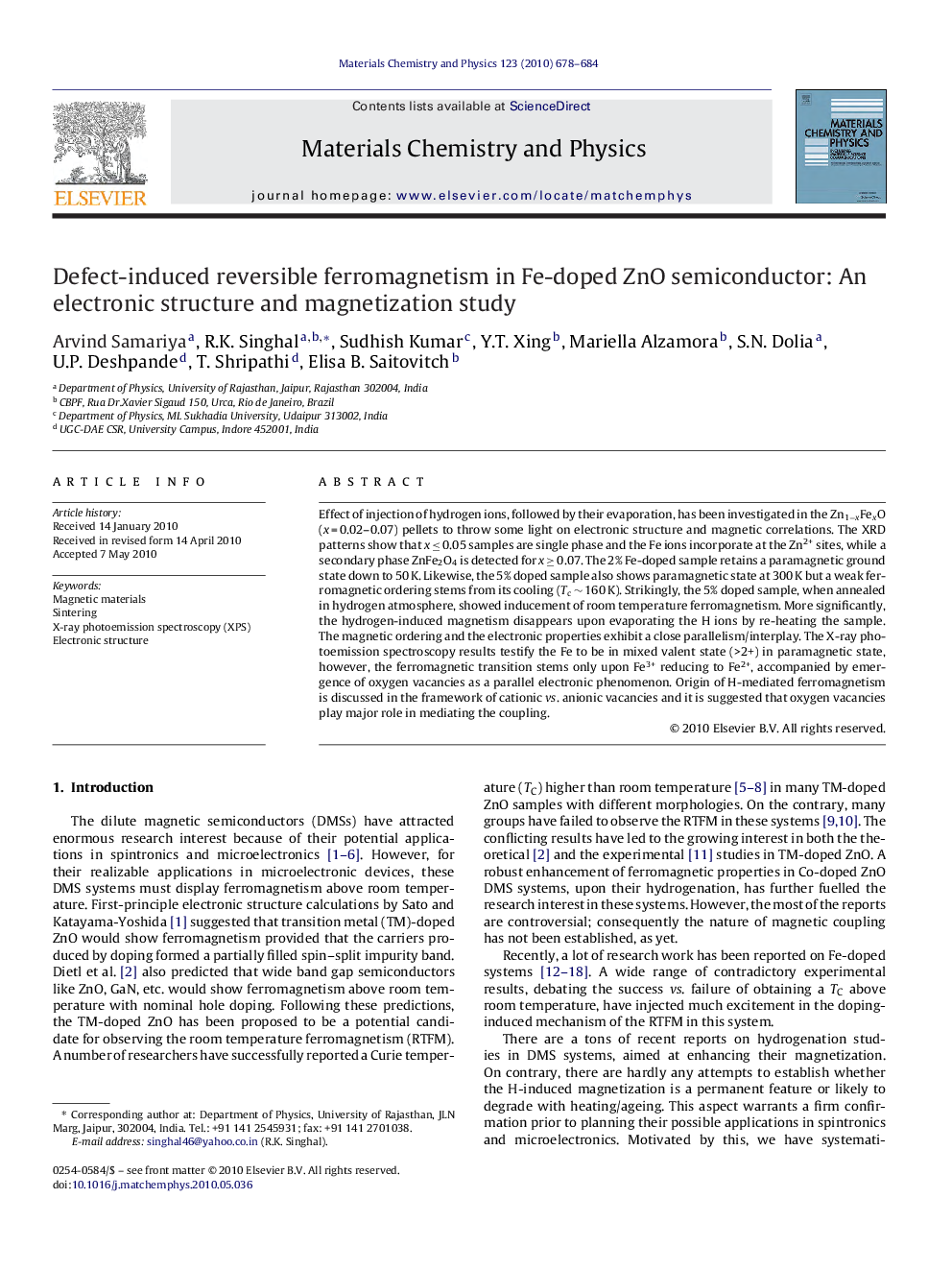| Article ID | Journal | Published Year | Pages | File Type |
|---|---|---|---|---|
| 1525224 | Materials Chemistry and Physics | 2010 | 7 Pages |
Effect of injection of hydrogen ions, followed by their evaporation, has been investigated in the Zn1−xFexO (x = 0.02–0.07) pellets to throw some light on electronic structure and magnetic correlations. The XRD patterns show that x ≤ 0.05 samples are single phase and the Fe ions incorporate at the Zn2+ sites, while a secondary phase ZnFe2O4 is detected for x ≥ 0.07. The 2% Fe-doped sample retains a paramagnetic ground state down to 50 K. Likewise, the 5% doped sample also shows paramagnetic state at 300 K but a weak ferromagnetic ordering stems from its cooling (Tc ∼ 160 K). Strikingly, the 5% doped sample, when annealed in hydrogen atmosphere, showed inducement of room temperature ferromagnetism. More significantly, the hydrogen-induced magnetism disappears upon evaporating the H ions by re-heating the sample. The magnetic ordering and the electronic properties exhibit a close parallelism/interplay. The X-ray photoemission spectroscopy results testify the Fe to be in mixed valent state (>2+) in paramagnetic state, however, the ferromagnetic transition stems only upon Fe3+ reducing to Fe2+, accompanied by emergence of oxygen vacancies as a parallel electronic phenomenon. Origin of H-mediated ferromagnetism is discussed in the framework of cationic vs. anionic vacancies and it is suggested that oxygen vacancies play major role in mediating the coupling.
